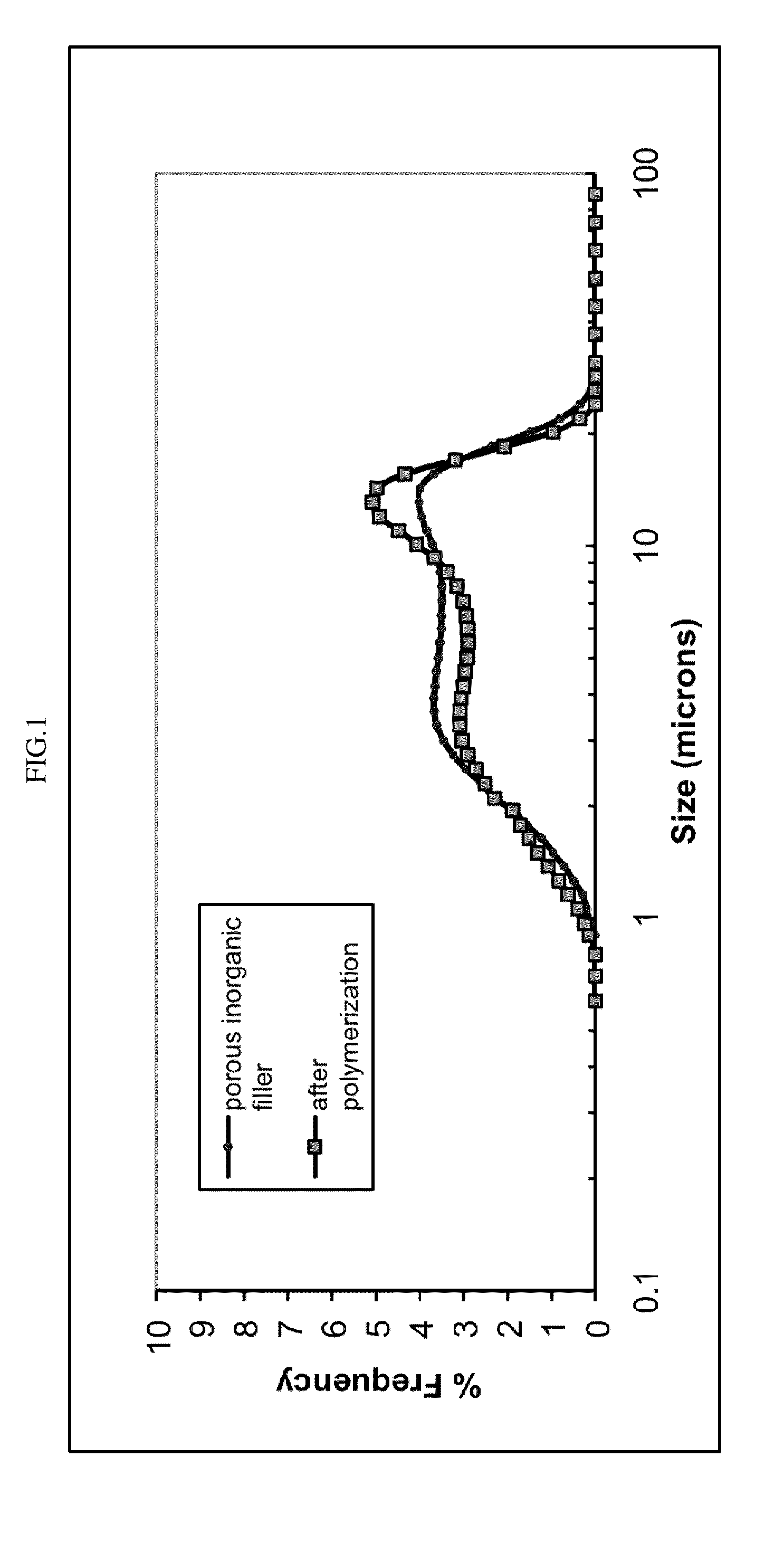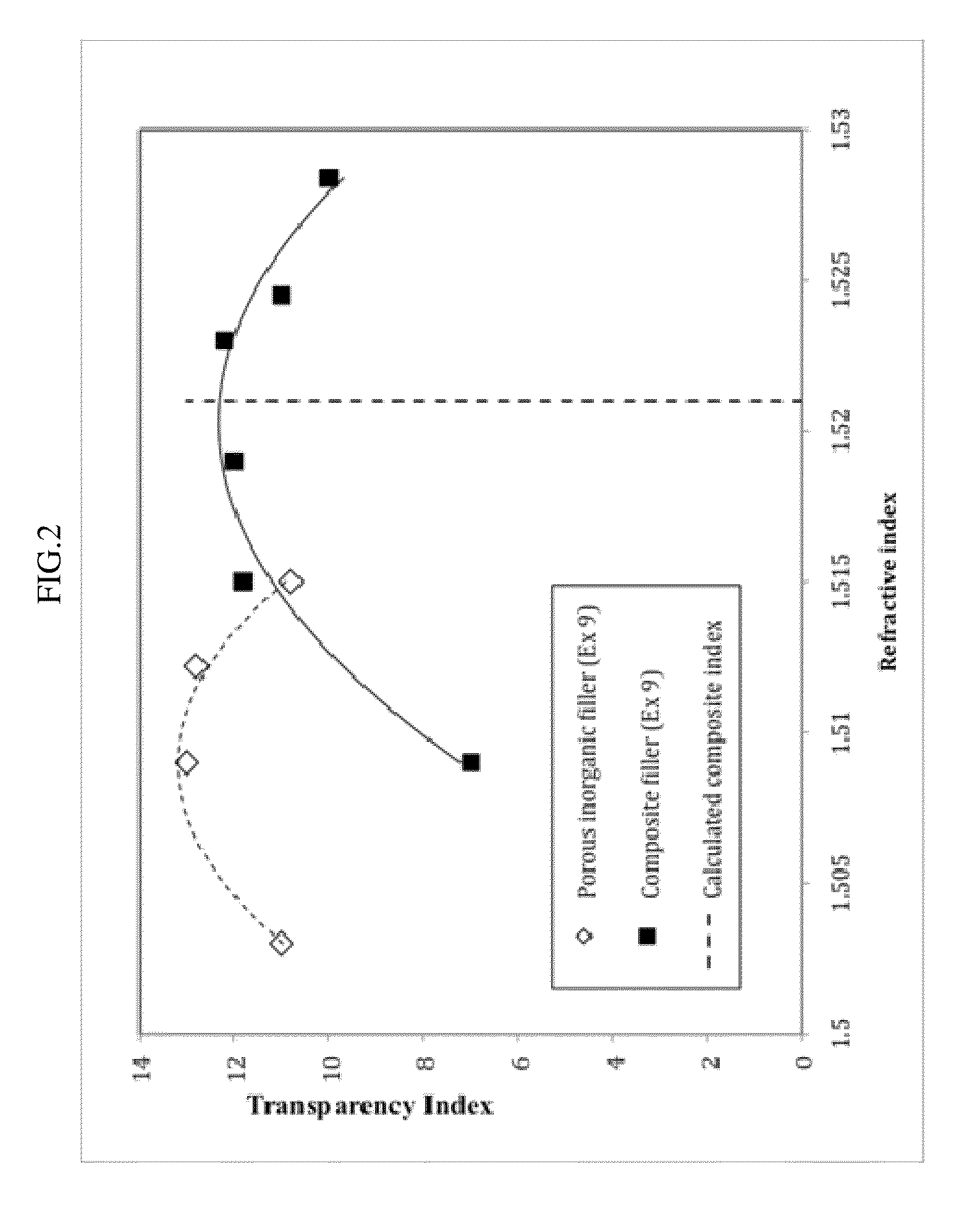Porous composite filler compositions
a composite filler and porous technology, applied in the field of polymer composites, can solve the problems of poor hardness, abrasion and wear resistance, heavy and brittleness, composites employed where performance requirements are demanding and not easily fulfilled with traditional structural materials, etc., to achieve the effect of increasing the transparency and aesthetic qualities of composites, reducing the volume contraction or shrinkage of composites, and high weight or volume fractions
- Summary
- Abstract
- Description
- Claims
- Application Information
AI Technical Summary
Benefits of technology
Problems solved by technology
Method used
Image
Examples
example 1
[0084]This example was performed identically to comparison example 1 except that after stirring for 4 hours at 45-50° C., 2.50 g of SR541 monomer and 25.0 mg of AIBN was added just prior to solvent removal. This procedure yielded a white powder that contained 9.1% polymer by weight.
example 2
[0085]This example was performed identically to comparison example 1 except that after stirring for 4 hours at 45-50° C., 5.00 g of SR541 monomer and 50.0 mg of AIBN was added just prior to solvent removal. This procedure yielded a white powder that contained 16.7% polymer by weight.
example 3
[0093]This example was performed identically to comparison example 6 except that after stirring for 96 hours at 25° C., 2.03 g of RESIN A was added just prior to solvent removal. The sample was then light cured in air using a dental curing light (Dentsply, model QHL75) with 100 seconds exposure at a distance of 1.0 cm. This procedure yielded a silanated white powder that contained 7.5% polymer by weight.
PUM
| Property | Measurement | Unit |
|---|---|---|
| Fraction | aaaaa | aaaaa |
| Fraction | aaaaa | aaaaa |
| Percent by mass | aaaaa | aaaaa |
Abstract
Description
Claims
Application Information
 Login to View More
Login to View More - R&D
- Intellectual Property
- Life Sciences
- Materials
- Tech Scout
- Unparalleled Data Quality
- Higher Quality Content
- 60% Fewer Hallucinations
Browse by: Latest US Patents, China's latest patents, Technical Efficacy Thesaurus, Application Domain, Technology Topic, Popular Technical Reports.
© 2025 PatSnap. All rights reserved.Legal|Privacy policy|Modern Slavery Act Transparency Statement|Sitemap|About US| Contact US: help@patsnap.com


